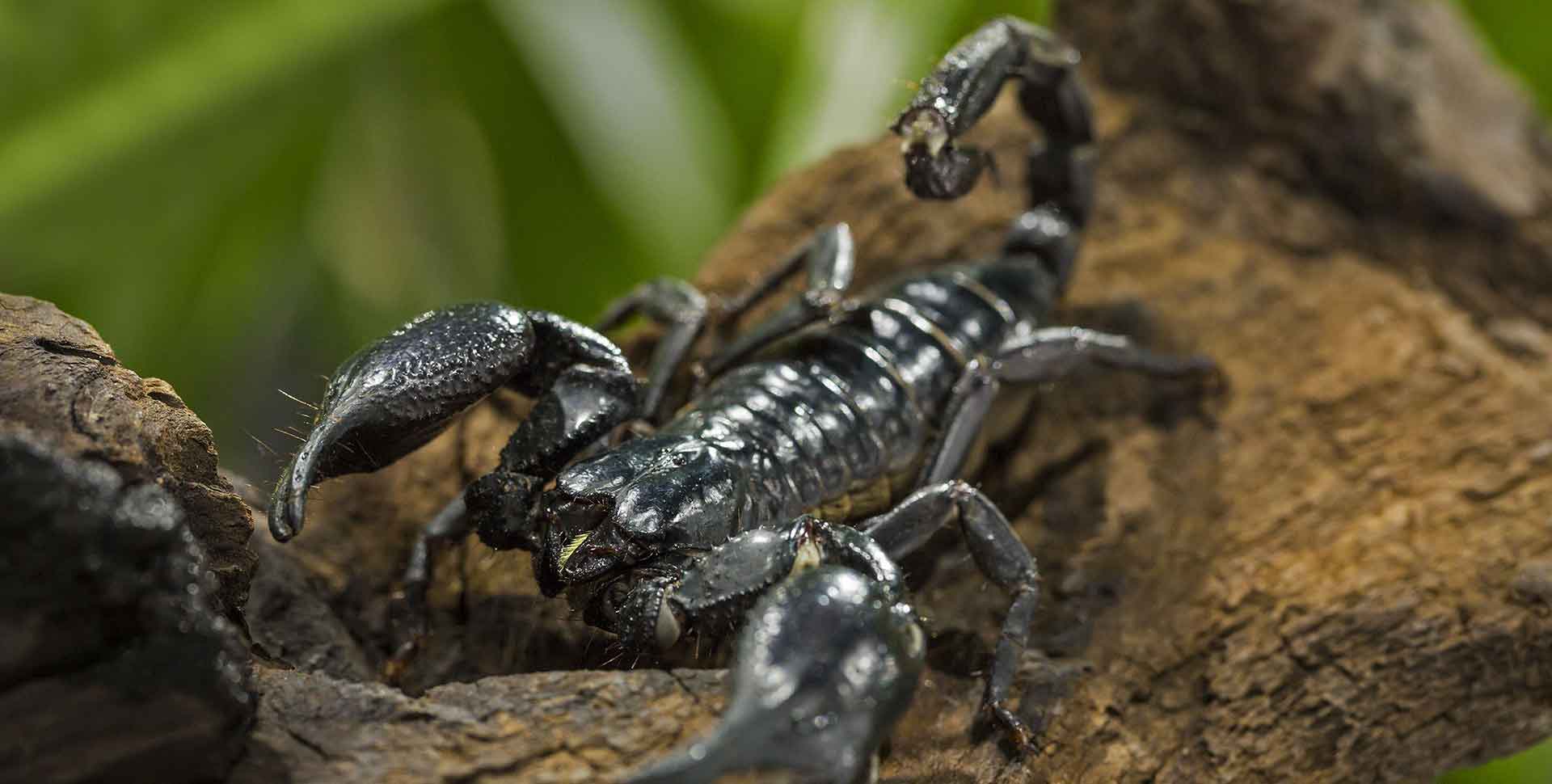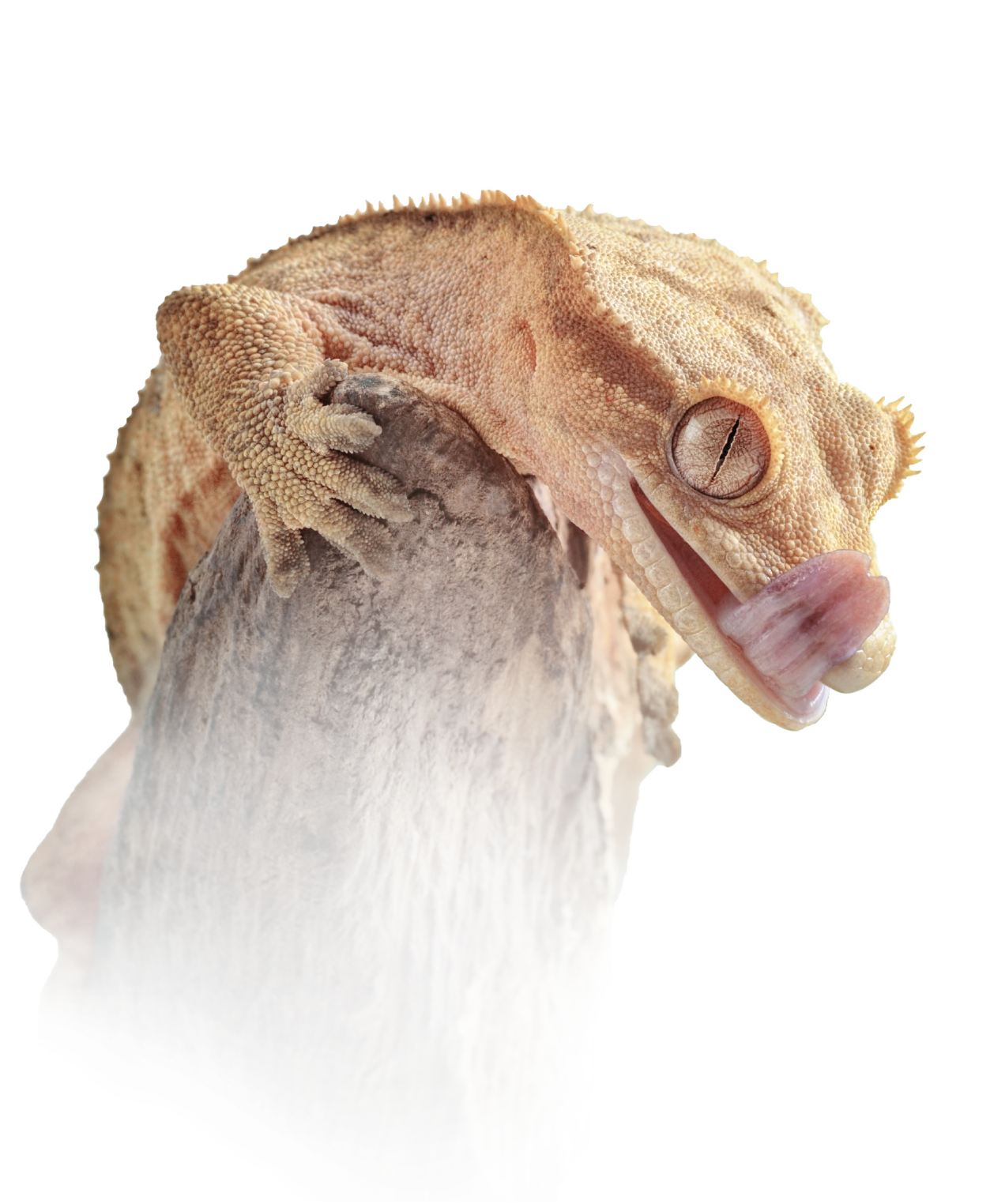Environment
Rainforests
Light
Optional
Temperature
70-80 Degrees Fahrenheit
Humidity
60-80%
Most Active
Nocturnal
Lifespan
6-8 years
Size:
Emperor scorpion nymphs, or scorplings, are incredibly small. Most terrestrial species are approximately .3 inches with the recommended purchase size of at least .75 inches. Males and females tend to be approximately the same size with adults reaching 6-7 inches.
Lifespan:
In captivity, with proper care, Emperor scorpions live around 6-8 years.
Enclosure:
When designing your Emperor scorpions’ enclosure, make sure to remember that they are a terrestrial species from the rainforest that likes to burrow. This means the enclosure should be large enough to fit enough substrate for the scorpion to burrow safely. Adults can be kept in a 10-gallon aquarium with at least 4-5 inches of substrate and plenty of hiding places. Note that nymphs/babies should not be kept in overly large tanks. Too large of a tank will make finding food difficult and will be harder to monitor behavior when you cannot view them with ease.
Temperature & Humidity
Emperor scorpions generally need a Heat Source with their ideal gradient at around 69-72 on the cold side and 78-82 degrees Fahrenheit on the warm side. Night time temperatures should not drop below 65 degrees. Make sure to monitor your enclosure temperatures for a couple days in a row before adding your scorpion. Remember that if you decide to run lights for live plants or display, the heat emitted from the lights can increase the temperature.
Humidity should be kept around 60-80 percent. Mist as needed to keep the proper humidity. One of the best ways to maintain humidity is by using a large amount of Golden Sphagnum Moss. Golden Sphagnum Moss is one of the highest quality mosses that holds humidity better than any other moss and is very mold resistant. When the scorpion is going through a molt, make sure to watch the scorpion to ensure it is not having issues. If the scorpion is molting near the Water Dish, you may want to increase the humidity. If the air humidity is too low, the scorpion can get stuck while molting.
Another great way to help control and maintain humidity while making your scorpion enclosure more natural, is adding more mosses and live plants. Green Sphagnum Moss, Royal Pillow Moss, Sheet Moss, Pillow Moss, Bromeliads, and Ferns are all excellent at storing and maintaining humidity.
Substrate
Emperor scorpions enjoy digging and burrowing. One of the most commonly used Substrates is a 50/50 coconut soil and peat moss mixture. This mixture is soft, keeps humidity well, and is easy to burrow in.
Hides
Providing multiple safe Hiding Places for your scorpion is extremely important to their overall health. Cork bark tunnels are one of the best options for scorpions. Cork bark is lightweight, easy to cut, and all natural. These tunnels often become centerpieces for beautiful, natural enclosures.
Plants and commercially available Hides can also be used to provide shade and shelter. The plants and leaves that make up the foliage can be fake or live depending on your personal preference.
Lighting
There is no special lighting needed for Emperor scorpions. Normal room lighting can be used to create a normal day/night cycle. Only use the lights for a maximum of 12 hours as too much light can cause stress. If using terrarium lights, ensure that there are multiple areas of darkness that the scorpion can hide in.
Feeding
Emperor scorpion feeding frequency will depend on the size of the scorpion. Nymphs tend to eat more often, every few days, and feed on small insects such as pinhead or small crickets. Adults will eat about once a week and can be fed crickets and roaches. Make sure to remove any uneaten prey items within 4-8 hours. This is especially important in humid environments due to the humidity. Note that when scorpions are preparing to molt, they may not eat for weeks at a time.
Water
Emperor Scorpions need a Shallow Water Dish. This dish will provide fresh water, as well as, keep the humidity of the enclosure slightly higher.
Decor
After the necessities, Emperor Scorpion enclosures can have any variety of decor that help to add enrichment. Cork Bark and Natural Wood Tunnels act as a centerpiece and anchor for a variety of plants and other accessories. Natural Leaves, Mosses, and Plants are also a great addition for general stimulation and enrichment with the added benefit of a naturalistic look.
Interesting Facts:
- Their latin name, Pandinus imperator, is thought to mean “Terrible Forrest Emperor” or “Forrest Emperor”.
- Like spiders, scorpions undergo molting when they are growing and need a larger exoskeleton. However, unlike spiders, scorpions do not regenerate limbs when molting.
- Emperor scorpions have poor eyesight. Instead, they possess specialized chemosensory appendages called pectines. Pectines are comblike limbs located behind the walking legs. These appendages sense both chemical and mechanical stimuli.
- Although they have a large and venomous stinger, their venom only amounts to a bee sting for humans.
- Emperor scorpions are normally dark black in color. However, when viewed under ultraviolet light, they appear to glow pastel green or blue.
- Emperor scorpions give live birth to an average of 20-40 babies, or nymphs.




